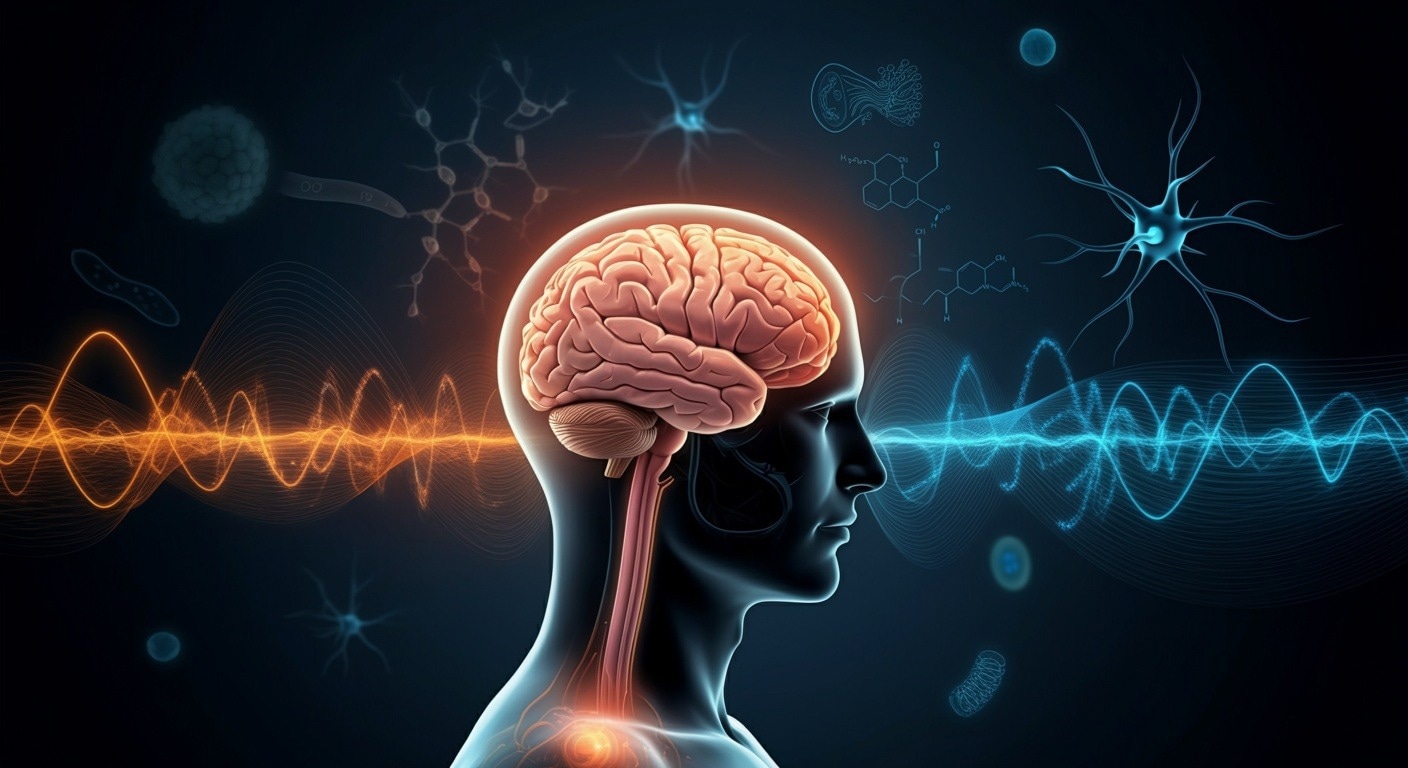Unveiling the science of gut-brain signals: How neural and hormonal pathways shape metabolism, behavior, and groundbreaking therapies for health challenges.

Review: Interoception and gut–brain communication. Image Credit: Shutterstock AI
In a recent review published in the journal Current Biology, researchers examined the origins, mechanisms, and significance of interoception (the sensing and processing of internal bodily states) and gut-brain communication in homeostasis, emphasizing neural and hormonal pathways influencing feeding behavior and metabolism.
Background
The study of interoception traces back centuries, with early philosophers pondering mind-body interactions. Scientific exploration gained momentum in the 19th and 20th centuries, linking mental health to internal organ function and stress to gastrointestinal (GI) responses.
The research highlighted the critical bidirectional communication between the gut and brain, facilitated by neural, hormonal, and microbial pathways that maintain homeostasis and influence behavior. Despite significant advances, fundamental mechanisms remain unclear, particularly in spinal afferents, the dorsal vagal complex (DVC), and enteric nervous system (ENS) interactions.
Further research is essential to uncover the detailed processes underpinning gut-brain signaling and its role in health and disease.
Emergence of Interoception in Modern Science
The term "interoceptive", coined in the early 20th century, described internal sensory receptors. However, research on interoception gained momentum in the mid-20th century through biofeedback therapy for managing metabolic and psychiatric disorders.
Significant progress occurred in the 21st century with studies on the gut-brain axis, revealing its role in integrating external sensory input with internal physiological states to regulate critical functions such as food intake, metabolism, and immune responses. This bidirectional feedback between the brain and body underpins the maintenance of homeostasis and is essential for overall well-being.
Evolutionary Origins of Gut-Brain Communication
Gut-brain signaling has deep evolutionary roots across invertebrates and vertebrates. Early bilaterians developed the gut-brain axis, enabling coordinated central nervous system (CNS) regulation of digestion via the ENS. Comparative studies highlight the conservation of neural and hormonal pathways across species.
For instance, experiments severing gut-brain connections in flies and mammals demonstrated impaired metabolic and behavioral regulation. Such findings emphasize the conserved nature of gut-brain pathways throughout evolution.
Mechanisms of Gut-to-Brain Communication
Neural Pathways
The vagus nerve is the primary neural conduit transmitting gut signals to the brain. Sensory neurons in the nodose ganglia relay mechanosensory information, such as stomach distension, to the brain. They also detect chemical stimuli, including nutrients and inflammatory signals, influencing satiety, hunger, and immune responses. The spinal nerves play a complementary role, particularly in glucose sensing and energy balance regulation. However, spinal afferent signaling and its interaction with vagal inputs remain underexplored and require further investigation.
Hormonal Pathways
Gut-derived hormones like ghrelin and glucagon-like peptide-1 (GLP-1) act on both vagal neurons and the brain. Ghrelin stimulates appetite, while GLP-1 promotes satiety and modulates glucose metabolism. Hormonal communication integrates slower, systemic responses with faster neural signals to maintain energy homeostasis. These pathways, though well-characterized, may hold untapped therapeutic potential for metabolic diseases.
Microbial Interactions
The gut microbiota produces metabolites, such as short-chain fatty acids, that influence vagal signaling and immune responses. This dynamic interplay between microbiota and neural pathways shapes gut-brain communication and affects metabolic and cognitive functions.
Recent findings suggest that microbiota-derived metabolites may modulate higher brain functions, including mood and cognition, opening new avenues for research.
Mechanisms of Brain-to-Gut Communication
The brain influences gut function through neural and hormonal pathways. The parasympathetic vagus nerve regulates digestion via motor neurons, controlling gastric contractions and enzyme secretion. In contrast, sympathetic spinal signaling suppresses digestion during stress.
Additionally, the hypothalamic-pituitary-adrenal (HPA) axis orchestrates hormonal responses, with cortisol modulating gut motility and immune function under stress.
Integration in the Brainstem
The dorsal vagal complex (DVC) in the brainstem integrates gut-derived signals and coordinates responses. Comprising the nucleus tractus solitarius (NTS), area postrema (AP), and dorsal motor nucleus of the vagus (DMV), the DVC regulates critical functions like hunger and digestion.
Emerging evidence suggests that GLP-1 receptor-expressing neurons in the DVC play pivotal roles in energy homeostasis, especially appetite suppression and weight regulation. The NTS processes sensory inputs and relays them to higher brain regions, while the AP detects circulating signals, influencing aversion and food intake.
Implications for Health and Disease
Disruptions in gut-brain signaling are implicated in various conditions, including obesity, diabetes, and neuropsychiatric disorders. Altered microbiota composition, hormonal imbalances, or neural dysfunction can exacerbate these issues. Understanding these mechanisms offers therapeutic potential, as demonstrated by GLP-1-based drugs like semaglutide, which effectively manage diabetes and obesity.
Furthermore, the impact of gut-brain interactions on neurodegenerative diseases like Alzheimer's warrants deeper exploration.
Conclusions
To summarize, the study of interoception and gut-brain communication highlights the intricate bidirectional pathways through which the body and brain maintain homeostasis and regulate critical functions such as metabolism, hunger, and immune responses.
With roots in evolutionary biology, gut-brain signaling operates via neural, hormonal, and microbial interactions, demonstrating conservation across species. Advances in understanding mechanisms like vagal and hormonal signaling have transformed therapies for conditions like diabetes and obesity. However, gaps remain, particularly in spinal afferent roles and ENS interactions. Focusing on these underexplored areas may unlock new therapeutic targets for treating metabolic, psychiatric, and neurodegenerative diseases.